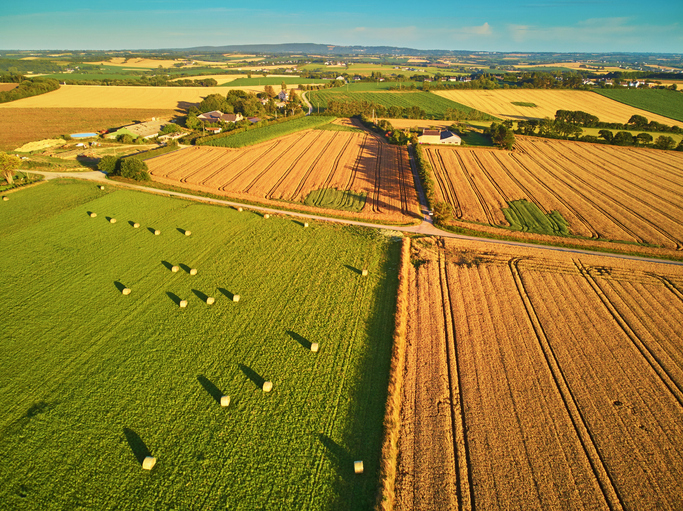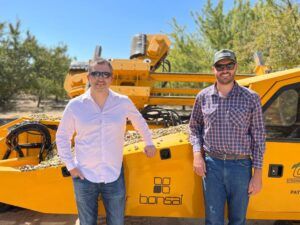[Ben Palen, principal at consultancy Ag Management Partners, is a fifth-generation farmer with diverse experiences in many facets of agriculture in North America, Africa, and the Middle East.
The views expressed in this article are the authors’ own and do not necessarily represent those of AgFunderNews.]
Of late, I wondered if I had fallen into a time warp as I read the headlines about outlawing foreign investment in US agriculture. Legislation has also been proposed from Senator Jon Tester at the national level, and by certain legislators in Kansas regarding foreign ownership in that state.
Much—but not all of the legislation—is aimed at China, with some of the legislation including other allegedly “bad actors” such as Iran, Russia, and Venezuela. The attorney general in Kansas cited “Mexican drug cartels” buying land in adjacent states as a reason for his concern. However, he offered no evidence to support his assertion.
With some of the rhetoric that has been put forth, I had to check my calendar as one might think that this was 1954, not 2024. It also brought to mind the hue and cry about “outside investment” in farmland that was a hot topic in the late 1970s when what was then the Continental National Bank in Chicago was planning a farmland investment fund. In that context, the concern was not about foreign investors, but rather it was aimed at non farm investors in general.
Times have changed. But in some ways, they have stayed the same. The flames of xenophobia have been fanned by some politicians who have an isolationist view of the world. The roots of the xenophobia may have long been present in certain regions of America, and that is a primary reason why a number of states have had laws on the books—in some cases for many decades—that were aimed at restricting ownership of agricultural land by non-farm entities. Despite those laws, there has been a significant amount of investment in most of those states by such entities, and to my knowledge, there has been little in the way of legislative action to tighten the laws.
I think that, by and large, the fact of outside investment in US farmland has been viewed in a positive way by farmers and others throughout the ag sector. Note that I
am not suggesting that those “non-farm entities” were investors from outside of the US. In the vast majority of cases, they were US-funded investment vehicles, and out of state residents, who have purchased the land.
Foreign interests owned 3.4% of US agricultural land as of Dec 31, 2022
As is often the case with other topics, the perception and the reality are different here. Most of us have no doubt seen the statistics indicating that foreign ownership of American rural land is a tiny fraction (3.4%) of the total. And a large part of that tiny fraction is timberland.
The most recent figures from the USDA suggest that, as of December 31, 2022, foreign interests owned 43.4 million acres of US agricultural land [a 50% increase vs 2017, according to a report from the Government Accountability Office]. That is out of a total of about 1.3 billion acres. It is the proverbial pimple on a whale. But outside observers tend to focus on dollars, not percentages, so when someone reads that the
foreign ownership amounts to X billions of dollars, it gets their attention, never mind the fact that the overall size of the sector is as I just noted. The reality is also that some of these foreign investors have been present in the USA for decades.
The backdrop for all of this discussion has multiple layers. Of note, is that the financial outlook for US agriculture over the next few years is, shall we say, challenging at best. The price of corn already has a 3 in front of it in some locations, and bean prices are headed for the single digits. There is no realistic scenario where the vast
majority of US corn and bean farmers can avoid red ink this year.
The same is true for most other crops. Let’s be clear about the reason for this situation. It should not be a surprise. The ag sector has been focused on the latest and greatest technology, and that technology is focused on increased yields—in plain words, on more. Well, more is already too much for the world markets, and the demand outlook is somber—at best—for the next while. A resetting is already underway to reflect this reality.
‘The reality of foreign ownership of US agricultural land somehow being a national security threat seems largely overstated’
With this in mind, the ag sector now faces a dilemma that is partly political, and partly economic. While we are on the one hand facing diminished demand for our primary crops, the saber rattling of xenophobia is aimed at, among others, China, which is our most important trading partner.
It is one thing to be concerned about China stealing certain aspects of US developed technology, but it is quite another to spin a tale of gloom and doom based on a
fabricated scenario of taking our farmland at such a scale and in a way that would have some adverse impact on America. Believing that kind of scenario is akin to believing in fantasy.
Actions have consequences, and in this instance it is not unreasonable to suggest that, faced with such a choice, China will just take its business elsewhere when it comes to importing US grain for its needs. To be sure, China needs the US because we are a huge importer of its goods, but we also need China. That said, Brazil would be happy to step into America’s shoes as an even larger grain trading partner for China than is the case now.
In the quest to make political hay based on a xenophobic view of the world, the ag sector is being put at risk based on a “problem” that is largely spun from whole cloth. The reality of foreign ownership of US farmland somehow being a national security threat seems largely overstated. Viewing this issue with a narrow lens is unwise, as is often the case when an ant hill is treated as a mountain.
America, notwithstanding its size, is not an island of itself. It is part of a world that is interconnected in so many ways, and to deny that connection based on some
insular beliefs is, well, just foolish, and divorced from reality.
Further, the capital needs for the agricultural sector are increasing, and the barriers to entry for the younger generation are formidable. It seems prudent to think twice before possibly foreclosing a capital source that could help the younger generation get a foothold.
Time for a reality check?
For several decades, the USDA has had reporting requirements for foreign investment in US farmland. While the system of disclosure may not be perfect in its present form, the foreign presence has been publicly known since the late 1970s. It has only become a ‘concern’ because of the agenda of certain politicians who are seizing on the issue du jour.
It is time for a reality check on this topic. A healthy agricultural sector is based on multiple markets for its products, a diverse land ownership base, and ready access to capital from a variety of sources. The three things must work together.
In my view, unless there is some tangible threat to our national security, the hue and cry about foreign investment in the US farmland is not much more than a side show, which, if not viewed in the light of reason, will have unfortunate consequences for a sector that, at this moment, needs all the help that it can get. A robust discussion would seem well -so that a thoughtful resolution of this topic can be achieved for the benefit of all concerned.




